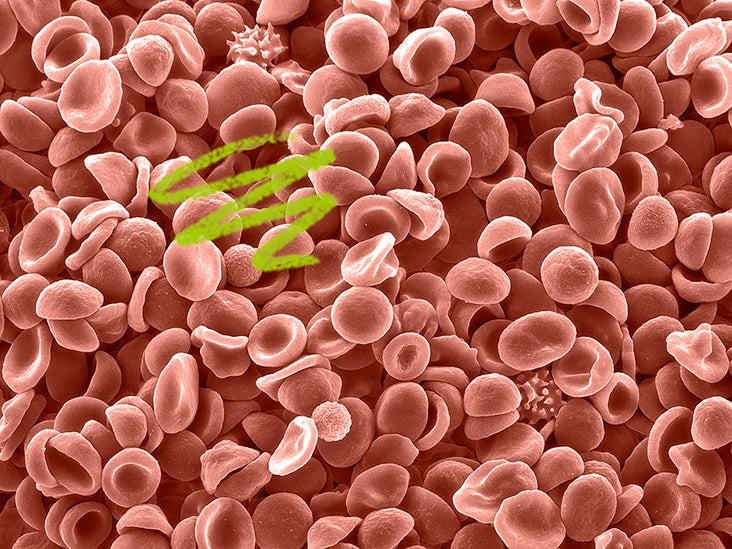Thrombocytopenia platelet count range: Severe, moderate, and mild - Medical News Today

Thrombocytopenia is an autoimmune bleeding disorder in which the number of platelets in the blood is significantly lower than usual.
The bone marrow produces platelets, which are blood cells that help stop bleeding by promoting blood clotting. When a person has fewer platelets than necessary, their blood may not clot fast enough, and they may experience bruising, spontaneous bleeding, and internal bleeding.
In this article, we look at how thrombocytopenia can range in severity. We also discuss what makes platelets change shape and the symptoms, diagnosis, and treatment of thrombocytopenia.
Doctors consider a healthy platelet count to fall within the range of 150,000–400,000 per microliter (μl) of blood. A lower number of platelets reduces their concentration.
A person's platelet count can fluctuate during menstruation and become low during the later stages of pregnancy.
People are more at risk of bleeding the lower their platelet count drops. However, bleeding problems are unlikely until the platelet count is less than 100,000 platelets per μl.
In a
- Mild: 101,000–140,000 platelets per μl. The increase in the risk of bleeding when injured is minimal.
- Moderate: 51,000–100,000 per μl. The risk of bleeding and bruising when injured is slightly higher.
- Severe: 21,000–50,000 per μl. Minor bleeding may occur even without injury.
- Very severe: 20,000 per μl or below. This can result in spontaneous bleeding and can be life threatening.
A doctor will likely begin the diagnosis of thrombocytopenia by asking questions about a person's symptoms, medications, and family history. They may then perform a physical examination to assess bruising and rashes.
The doctor will also draw blood to check the exact concentration of platelets. In some cases, they may request other tests,
- a complete blood count (CBC)
- a blood smear test to look at platelets under a microscope
- a bone marrow test
- other tests to check blood clotting
- sometimes, a bone marrow biopsy, which involves using a needle to take a sample of fluid from the marrow
There is no test for thrombocytopenia specifically. Therefore, a doctor will make the diagnosis by ruling out other causes of low platelets.
In their nonactive form, platelets are plate-shaped. When a blood vessel becomes damaged, it sends a signal to the platelets, which respond by traveling to the damaged area. Here, they transform into their active shape, growing tentacles so that they can adhere to the broken blood vessel to plug the bleeding.
This shape change results in the platelets spreading and creating a mesh formation to limit bleeding and close any gaps.
The symptoms of thrombocytopenia may include:
- spontaneous and easy bruising
- regular nosebleeds that are long lasting and difficult to stop
- bleeding in the gums
- prolonged and heavy menstrual bleeding
- hemorrhaged blood vessels or leaks, which produce a rash that appears as small discolored dots
- extreme fatigue
- depression
- blood blisters inside the cheeks
- rarely, signs of internal bleeding, such as blood in the stool or urine
- rarely, bleeding on the brain, called intracranial hemorrhage
The treatment options for thrombocytopenia will depend on its severity and the person's medical history. Treatments may include:
Medication
Doctors may treat thrombocytopenia using:
Corticosteroids
Corticosteroids are the
Thrombopoietin receptor agonists (TPO-RAs)
These drugs work by stimulating the production of platelets. They include eltrombopag (Promacta), avatrombopag (Doptelet), and romiplostim (Nplate).
Platelet transfusion
If treatment with medication is unsuccessful, a doctor may suggest intravenous immunoglobulins (IVIG) to replace platelets. Doctors typically only use this treatment in emergencies, as they do not consider it a cure. The reason for this is that the immune system will likely destroy the new platelets in time.
Surgery
Doctors may suggest a splenectomy, which is a surgical procedure to remove the spleen. This treatment is usually only appropriate for severe cases of thrombocytopenia.
Thrombocytopenia ranges from mild, involving a platelet count of 101,000–140,000 per μl of blood, to very severe, where a person has a platelet count of 20,000 per μl or lower. Severe cases of the disorder can be life threatening.
A doctor will diagnose thrombocytopenia by asking questions, carrying out a physical examination, and running a series of medical tests. These may include blood tests, bone marrow tests, and tests to assess blood clotting.
A doctor may treat symptoms of thrombocytopenia, such as regular nosebleeds, bruising, and bleeding in the gums, using corticosteroids, platelet infusion, or surgery.
Comments
Post a Comment